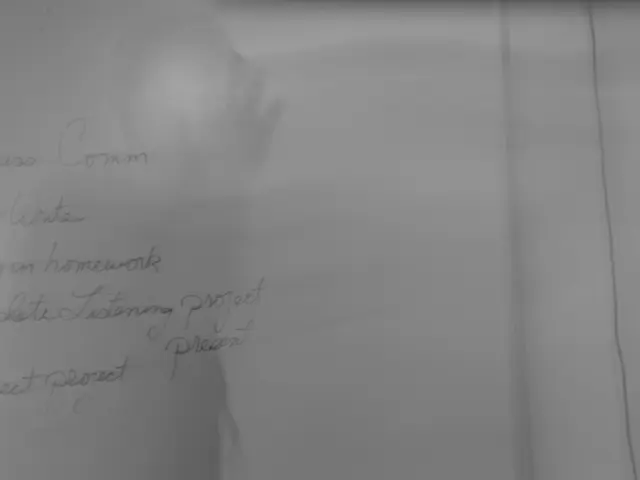Surveillance Corporation Unintentionally Exposed 21 Million Employee Screenshots on the Web
Digital monitoring of employees goes awry:
With the expansion of digital tools in the workplace, companies are ramping up employee surveillance - and the risks are mounting. This week, a trove of sensitive data from the employee surveillance app, WorkComposer, was discovered leaked, potentially exposing thousands of workers and their parent companies to a range of threats.
Researchers at Cybernews recently uncovered that over 21 million screenshots from WorkComposer, used by around 200,000 companies worldwide, were found unsecured in an Amazon S3 bucket. The app captures screenshots of an employee's computer every 3 to 5 minutes, potentially revealing sensitive information like internal communications, login credentials, and personal details that could lead to identity theft, scams, and more.
The exact extent of the affected companies and employees isn't clear. However, Cybernews, who previously exposed a similar leak by WebWork earlier this year, reached out to WorkComposer, and the information was secured. WorkComposer did not respond to Gizmodo's request for comment.
Although the images are now secured, the WorkComposer leak demonstrates that companies should think twice before hoarding data on their employees. As Jose Martinez, a Senior Grassroots Advocacy Organizer at the Electronic Frontier Foundation, told Gizmodo, "Workers shouldn't be subjected to this kind of invasion of privacy." In the event of a worker's incompetence, Martinez believes such data could be used against them. "WorkComposer should be out of a job for this breach," he added.
In addition to taking screenshots, WorkComposer offers services like tracking time and web activities. On its website, the company boldly states its aim is to help people "stop wasting their lives on distractions" by focusing on what's important to them. However, the irony here is hard to miss - a massive data leak like this is undoubtedly a major distraction for most. Moreover, any surveillance that you're aware of inherently becomes a distraction.
The negative mental health implications of workplace surveillance are well-researched. Digital monitoring can create an atmosphere of mistrust and stress, leading to anxiety, burnout, and reduced job satisfaction. Surveillance can even disrupt productivity, as employees may focus on hitting quantified behavioral metrics rather than doing their jobs effectively.
While workplace surveillance is nothing new, incidents like WorkComposer's leak underscore the growing risks and consequences inherent in the increasingly intrusive digital monitoring of employees. The U.S. offers little protection against such intrusions, leaving it up to individual companies to decide the extent of their worker surveillance. However, it's challenging to justify the near-total removal of privacy and autonomy that comes with tools like WorkComposer.
Privacy Invasion, Mental Health Strain, and Questionable Productivity
As monitoring software like WorkComposer becomes more prevalent, concerns over privacy, mental health, and productivity have gained traction. These tools track employee activities, such as attendance, computer usage, and keystrokes, with the goal of ensuring productivity and security. However, frequent screenshots and monitoring of communication can expose sensitive personal and business information, leading to situations like the WorkComposer leak in 2025[5].
On-going surveillance can create a workplace atmosphere of mistrust and stress, resulting in anxiety, burnout, and reduced job satisfaction[3]. While direct studies on the psychological burden of surveillance may not be referenced, the issue is well-documented in broader research.
The impact of surveillance on productivity is mixed. While the aim is to enhance productivity through monitoring, some evidence points to stable or improved productivity with remote work arrangements, with flexibility and autonomy playing a crucial role[2]. Conversely, excessive surveillance may undermine motivation and creativity.
U.S. Regulations and Recommendations
Employee monitoring is regulated under a patchwork of federal and state laws focusing primarily on privacy and data protection:
- Federal laws such as the Electronic Communications Privacy Act (ECPA) limit interception of electronic communications but allow employer monitoring when the employer owns the equipment or network.
- State laws vary, with some mandating employee consent for monitoring, especially for audio or video recordings.
- The California Consumer Privacy Act (CCPA) can apply to employee data, such as leaks involving companies like WorkComposer[5].
- Overseas entities may fall under laws like GDPR, while multi-jurisdictional compliance frameworks are also relevant.
To maintain a balance between workplace requirements and employee rights, recommended protections include:
- Transparency: Employers should clearly communicate data collection, usage aims, and privacy policies.
- Consent: Obtaining employee consent where required by law or as a good practice helps build trust.
- Data Minimization and Security: Collect only essential data and secure it with strong cybersecurity measures to prevent leaks and safeguard sensitive information.
- Limits on Surveillance Scope: Avoid excessively intrusive methods such as continuous screenshotting or personal device monitoring unless necessary.
- Mental Health Support: Employers should prioritize mental health resources and support to minimize the negative effects of surveillance.
- Policy Development: Regularly update policies to stay compliant with evolving legal standards and technological capabilities.
- The future of tech and technology, particularly in workplaces, is under scrutiny as companies increasingly use employee surveillance tools like WorkComposer.
- The leak of sensitive data from WorkComposer, a popular employee monitoring app, has highlighted the risks associated with the intrusive digital monitoring of employees.
- The 2025 WorkComposer leak exposed over 21 million screenshots, potentially compromising the privacy and security of around 200,000 companies worldwide.
- Advocacy groups argue that workers should not be subjected to such invasions of privacy, and question the effectiveness of tools like WorkComposer on improving productivity.
- Digital monitoring in the workplace can create an atmosphere of stress and mistrust, leading to a decline in job satisfaction, anxiety, and even burnout.
- In the U.S., employee monitoring is regulated by a mix of federal and state laws, with notable regulations including the Electronic Communications Privacy Act and the California Consumer Privacy Act.
- To mitigate the risks and potential negative impacts, employers are encouraged to establish clear data collection policies, obtain employee consent where necessary, implement strong cybersecurity measures, and prioritize mental health support for their workforce.

![Unveiled Secrets: A Gizmodo/io9 Exposé on [subject]](/en/img/20250608155951_pexels-image-search-image-description-sunset-beach-landscape.jpeg)





